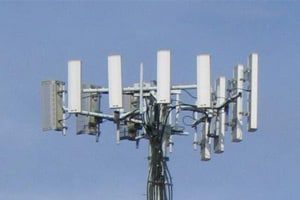
A Maryland county is having a town’s cell phone towers tested for health risks following a unanimous town commission vote. The Poolesville water tower’s cell phone towers have brought in more than $1 million in rental fees paid by cell phone carriers such as AT&T, T-Mobile, Verizon, and Sprint/Nextel, noted The Washington Post. Now, following […]
 A Maryland county is having a town’s cell phone towers tested for health risks following a unanimous town commission vote.
A Maryland county is having a town’s cell phone towers tested for health risks following a unanimous town commission vote.
The Poolesville water tower’s cell phone towers have brought in more than $1 million in rental fees paid by cell phone carriers such as AT&T, T-Mobile, Verizon, and Sprint/Nextel, noted The Washington Post. Now, following the vote, Radiofrequency Safety International Inc. (RSI) will conduct a hazard assessment monitoring of the towers and checking for so-called “hot zones” in areas where high radiofrequency levels are seen.
Town Manager Wade Yost told The Washington Post that cell towers have been on the water tower 15 years. Later next month, RSI will be monitoring the towers and producing a report meant to determine if a violation of RF levels exists, added Yost. The report costs $4,000 to produce. “It is something we contemplated doing for some time. We have no indication to believe anything is unsafe. We believe they are safe,” Jim Brown, president of the Poolesville Town Commission, told The Washington Post.
RSI general manager, Greg Kechter, said the reports are fairly quick to produce and his firm will utilize special instrumentation to take RF readings near the site and will be evaluating readings to be sure levels comply with Federal Communications Commission (FCC) standards for environmental regulations, The Washington Post said.
Last month, we wrote that the FCC just announced it would again be looking into the health effects of cell phone radio waves. The United States regulator said it was seeking comment from other agencies and health experts on whether it should or should not update FCC standards that limit exposure to cell phone electromagnetic fields, especially to children, said Reuters. The regulator last reviewed those standards in 1996, which was before mobile devices became as popular as they are today.
Last year, the FCC planned on taking another look at cell phone radiation over concerns the ubiquitous devices may be linked to brain tumors. The then-chairman of the FCC requested the review, releasing a proposal to his peer commissioners and calling for a formal inquiry into cell phone emission standards implemented in 1996.
Radiofrequency devices—including cell phones—issue radiofrequency energy, a type of non-ionizing radiation. Last year, the National Cancer Institute said no consistent data links non-ionizing radiation to increased cancer risks; the FCC agreed. An FCC spokesman pointed out that the agency does not believe there exists evidence linking the devices to cancer, headaches, dizziness, memory loss, and other health problems.
Despite the FCC’s prior stance, the World Health Organization (WHO) included cell phone radiation to its list of potential carcinogens the prior year. The WHO also called for more research on the devices, which have grown to 5 billion in use as of 2012. And, although the body of research that has examined a possible association between cell phones and cancer continues to be inconclusive, the WHO’s International Agency for Research on Cancer (IARC) decision to classify cell phone radiation as possibly carcinogenic to humans was based on a review of hundreds of human and animal studies, including the 2010 INTERPHONE study. In fact, INTERPHONE found that the heaviest cell phone users experienced a 40 percent increased risk for gliomas, the most common type of brain tumor.
What is known is that the devices do produce energy that manifests in heat. Experts fear that this heat, which can be experienced when the device is held to the ear, changes brain cell activity, a point of concern raised by some studies.
Last year, Health Canada proposed guidelines for limited cell phone use and encouraged Canadians to reduce cell phone talk times and to communicate by text messaging or with a hands-free device whenever possible. Other countries have already implemented this tactic, and, in Russia, officials issued a recommendation that children under 18 completely avoid using the devices. The United Kingdom, Israel, Belgium, Germany, India, and Finland have urged their citizens to be very cautious when it comes to their children’s use of cell phones; France issued a number of recommendations that include selling devices that limit head exposure to EMF, banning ads promoting devices to children under the age of 14, banning cell phone use to children during teaching activities in certain locations and for certain grades, and indicating the SAR (specific absorption rate) clearly on the device, among others.


